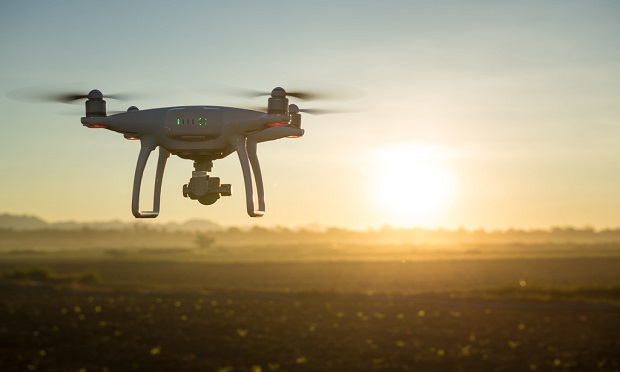 The insurance industry can anticipateeven more technology to enhance safety, reduce costs, and getfamilies back on their feet faster after disaster strikes. (Photo:Shutterstock)
The insurance industry can anticipateeven more technology to enhance safety, reduce costs, and getfamilies back on their feet faster after disaster strikes. (Photo:Shutterstock)
Over the past decade technology has become increasinglyinterwoven into our daily lives and work. Back in 2010, tablets,battery-powered cars, augmented reality, smartwatches, consumerdrones and smart speakers were hard to imagine.
|To say technology has transformed throughout the decade is anunderstatement.
|Drones transform claims
The same could be said of how technology has impacted theinsurance industry in the 2010s. It has has enhanced how damage isassessed and claims are adjusted. Aerial imagery and data-capture by drones isnow one of the quickest and safest ways insurance companies canestimate structural damage and determine the appropriate claim.Over the course of the last decade, drones have helped reduce theclaims adjustment period from 11 days to 5 or 6, almost cutting thetime in half.
|In order for drones to be fully accessible for insurers, we needto take a step back and mention the regulations that have movedboth the drone and insurance industries forward. When the FederalAviation Administration (FAA) first developed airspace in theFifties, it wasn't done so with technology in mind, just airplanes.Drones were unthinkable.
|Regulatory leadership
More recently, however, the FAA has made major updates with thePart 107 program and Low Altitude Authorization and NotificationCapability (LAANC). The Part 107 program provides a license forcommercial pilots to fly drones, increasing the drone pilot poolfrom a couple of thousand to over 120,000 in the U.S. and expandingthe amount of pilots for insurers to hire. LAANC opened up roughly25% to 30% of airspace for temporary clearance within restrictedairspace, say five miles of a local airport.
|LAANC has enabled insurers to rely on drone pilots 99% of thetime. Reliability in insurance is important, especially when adisaster strikes.
|Drones and disaster
Throughout the decade, commercial drones have helped communitiesdevastated by natural disasters — suchas Hurricane Harvey, Hurricane Irma, and wildfires inCalifornia — receive their claimsfaster. By leveraging a drone service provider, such as DroneBase,insurers can hire and dispatch a trained local pilot to capture thestructural damage from above. With tens of thousands of addressesto assess, drone operations companies help expedite claimsand allow clients to get back to whole quicker.
|Additionally, drone technology has vastly improved over thedecade, which enables adjusters to have higher resolution imagesand data. The drones today are much more reliable with safetyfeatures such as obstacle avoidance, extended battery life, andbetter cameras. More advanced drones are also more affordable fordrone pilots to purchase, which allows them to spend less investingin the hardware to have a better result.
|Looking to the future
Looking ahead to the 2020s, I anticipate that technology will continue to augment the insuranceindustry with both drones and artificial intelligence. Just astechnological enhancements have made TVs and computers moreaffordable, advanced sensors for drones are also more affordable.Even earlier this year, companies would have to shell out $25,000or more for a thermal flight. However, just as the democratizationof technology has opened the door for better phones, cameras, andcomputers, the thermal drone flights of tomorrow will be more costeffective. Thermal often provides an instant, causal analysis ofproblems with an asset. For example, this will allow insurers toprovide a quality assessment of a roof to find cracks or damage toHVAC units.
|Artificial intelligence is often a buzzword carelessly thrownaround; however, I believe it will have a significant impact on theinsurance industry in years to come. It will help guide adjustersto make better informed and faster decisions, highlighting issuesso they can take the appropriate action. I believe AI will be ourfriend in insurance.
|It's clear a lot has changed since 2010. I look forward toseeing more advancements in technology, and therefore moretechnology for insurers to leverage to enhance safety, reducecosts, and get families back on their feet faster throughout the2020s.
|Dan Burton ([email protected]) is the founderand CEO of DroneBase, a global drone operations company based inSanta Monica, Calif., that provides businesses with aerialinformation to make better, real-time decisions about criticalassets.
|These opinions are the author's own.
|See also:
Want to continue reading?
Become a Free PropertyCasualty360 Digital Reader
Your access to unlimited PropertyCasualty360 content isn’t changing.
Once you are an ALM digital member, you’ll receive:
- All PropertyCasualty360.com news coverage, best practices, and in-depth analysis.
- Educational webcasts, resources from industry leaders, and informative newsletters.
- Other award-winning websites including BenefitsPRO.com and ThinkAdvisor.com.
Already have an account? Sign In
© 2024 ALM Global, LLC, All Rights Reserved. Request academic re-use from www.copyright.com. All other uses, submit a request to [email protected]. For more information visit Asset & Logo Licensing.








